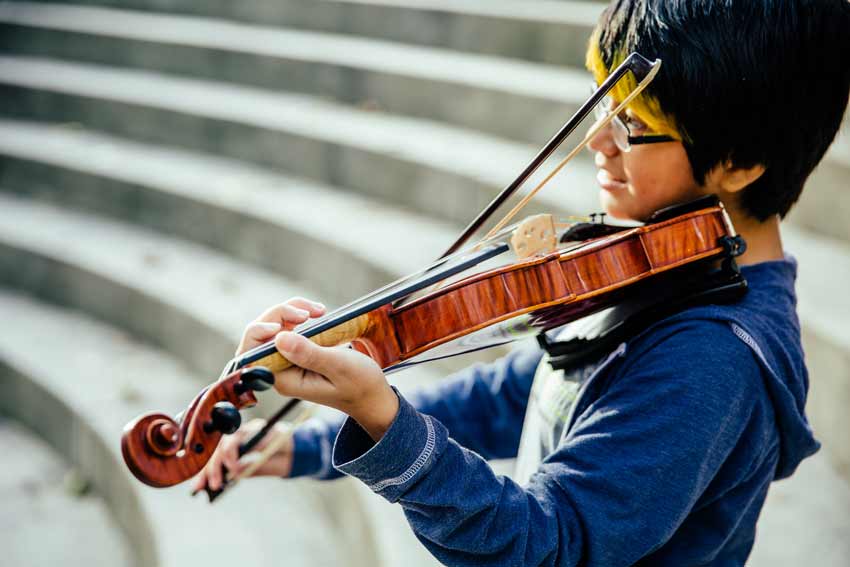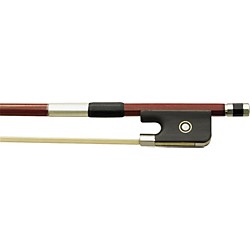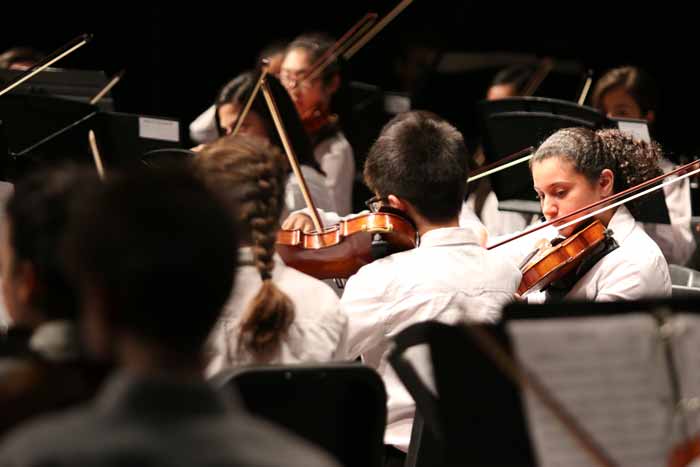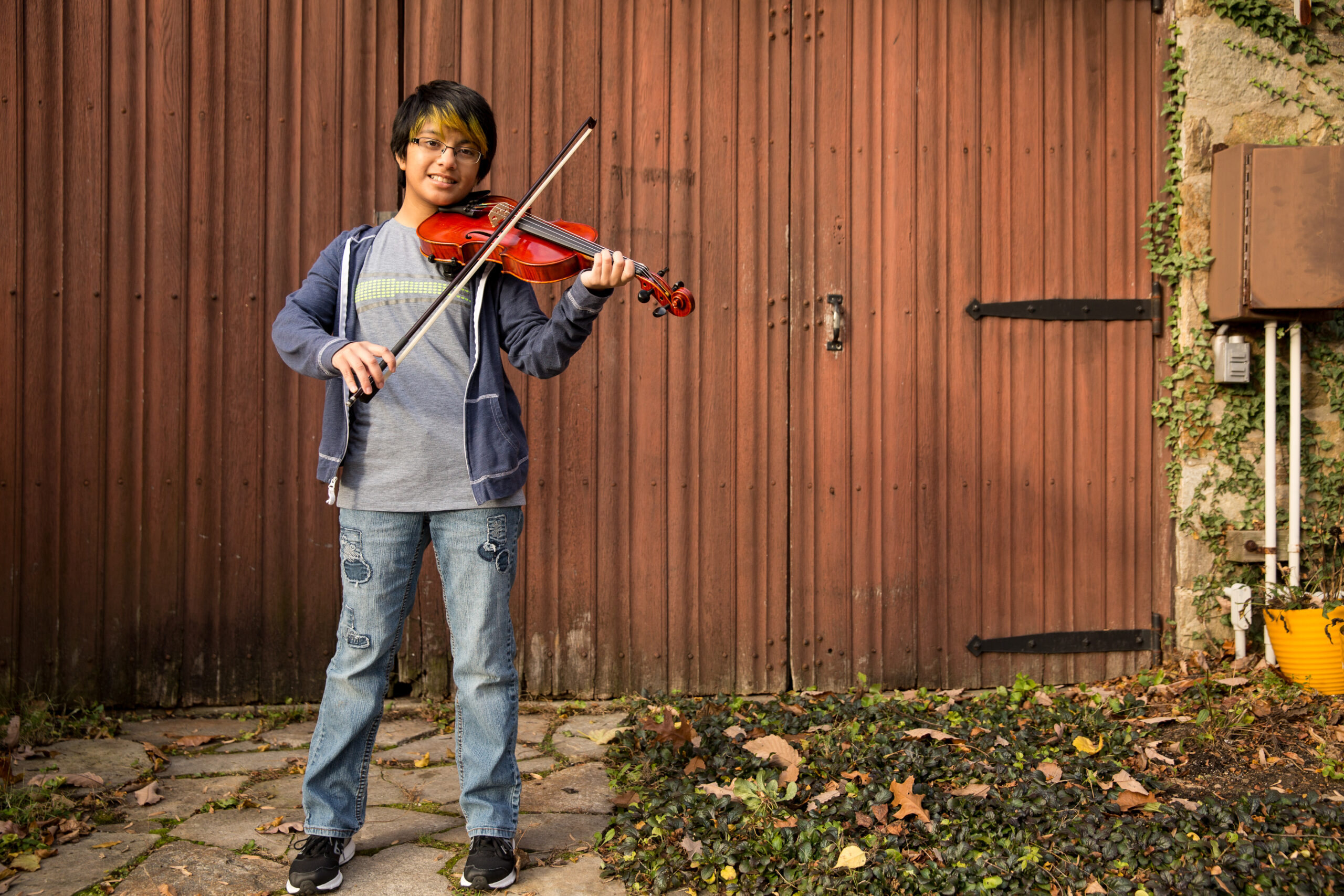August 01, 2015
Viola Buyer’s Guide


Buying a new instrument can be stressful, particularly if you’ve chosen to purchase your child’s viola online. Since the viola is a relatively complex instrument, many experts advise parents to speak with their child’s orchestra teacher for tips on choosing a viola that’s well-made, has a good tone, and is worth spending money on. As with other instruments, it’s important that the viola you purchase for your child is perfect for their level of musicianship and size, and also fits into your budget. From country or origin to size, here are a few things to consider when purchasing your child a viola.
What Size Should I Get?
Although violins and cellos come in standard sizes, violas do not. Full-size violas range from 15”-17”, with 16” being the average. A knowledgeable music dealer or teacher should be able to help you find the right size viola for your child. Generally, adults and teenagers use 15” to 16 ½” violas, while younger children use student-sized violas in the 11”-14” range. As a general sizing guideline, when your child holds the viola and places their chin on the chin rest, they should be able to extend their left arm under the viola and curve the tips of their left fingers around the end of the scroll while maintaining a slight bend in their left elbow. If this position is difficult to attain comfortably, the viola is the wrong size. Again, a viola dealer or your child’s music teacher should be able to determine what size is right for your child.
Is Brand Important?
At Music & Arts, we stock violas from top brands in the industry. While brand name can impact the sound and quality of the instrument, many experts recommend paying attention to the country of origin instead. As a general rule of thumb, avoid purchasing a viola that’s mass-produced- including anything made in Taiwan or Hong Kong. These tend to be unbalanced, produce a terrible tone, and are usually poorly manufactured, making the viola harder to play than usual. Our selection of violas include those manufactured in the United States, Romania, and Germany, among others. When it comes to country of origin, it’s a good idea to do some outside research and decide which is the best option for your child. Again, you should be able to get more information from your child’s viola or orchestra teacher.
Which Viola is Best for My Child’s Level?
Choosing a viola that matches your child’s skill level is yet another crucial step in the viola purchasing process. For example, if your child has never picked up a viola before, he or she likely won’t benefit from the extra features of an advanced viole; therefore, a beginning or student grade viola is the better choice. Plus, if you purchase an advanced viola for a beginning student, you’ll be spending more money than necessary. If your child has a year or two of viola lessons under their belt, an intermediate viola is a good choice, while professional level violas should be reserved for those who are super dedicated to the craft. Another thing to consider is your child’s size- if your child is smaller and moving their way through sizes, it may be wise to spend less on a viola until they’re able to play a full-size viola.
Does My Child Need a Viola Case?
Once you decide on the perfect viola for your child, you should consider purchasing a sturdy case. After all, why would you spend so much money on a viola without doing what you can to protect it from harm? In addition to a case, you’ll need to purchase essential accessories, including a bow, strings, and cleaning cloths. Fortunately, Music & Arts sells outfits, or complete packages that include everything your child will need to get started with the viola. Some outfits include strings and bows, while others include cases, pitch pipes, cleaning clothes, and more. If you’re purchasing a replacement or upgraded viola, your child may not need these supplies but, for a first-time player, purchasing an outfit is highly recommended. Plus, you’ll save time and money in the process.


Are Viola Bows the Same Size as Violin Bows?
If you’re thinking about using a violin bow to play the viola, think again. Viola bows are shorter and heavier than those used for the violin. Additionally, viola bows use a wider band of horse-hair. Similar to viola sizes, viola bows are often sold in fractional sizes. The following bow sizes correspond with the associated viola size: 4/4 bow should be purchased for a 15”-16.5” viola, a ¾ bow should be purchased for a 13”-14” viola, a ½ bow should be purchased for a 12” viola, and a ¼ bow should be purchased for an 11” viola. If you purchase your viola in an outfit, the bow included will automatically correspond with the size of the viola but, if you’re purchasing the bow separately, keep this sizing chart in mind.


What are Volume and Voice?
Two other factors that should affect your decision are volume and voice. Many complicated factors affect the volume of a viola, but none as much as size. As with other instruments, the larger the sound body, the greater the sound produced. Ideally, you want volume with a balanced tone; therefore, a newer instrument produced by a quality manufacturer is your best bet- this way, you’re more likely to get a good balance of voice for a decent price and the instrument’s sound will improve as it ages. Next, voice is something that’s worth spending money on. Very hard woods, such as maple, will yield brighter voices while softer woods will yield darker voices. It’s up to you and your child to decide which sound you’d like your viola to produce. Finally, there are electric violas available for those who are interested in increasing the volume of their viola in an electronic way.


Interested in renting instead? Learn more about Viola Rentals.





